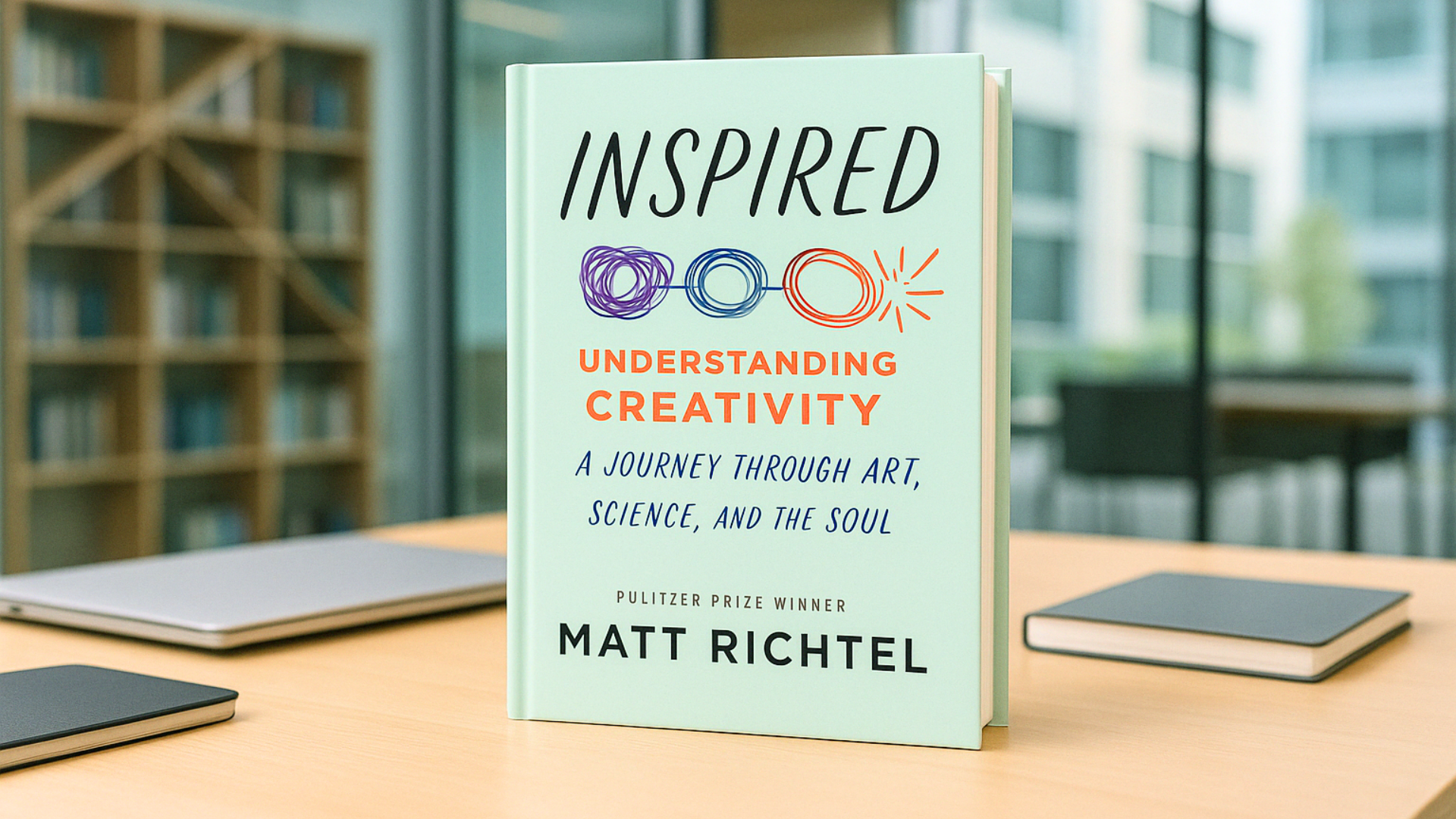Creativity, Uncertainty, and the Beauty of Beginning Again

Book Review: Inspired by Matt Richtel
A wide-ranging and story-rich journey into the science, soul, and everyday practice of creativity
In Inspired, Matt Richtel sets out to answer a deceptively simple question: what is creativity, and where does it come from? Through a blend of narrative journalism, personal reflection, and scientific research, he argues that creativity is not a rare gift but a natural function of the human brain. It is not limited to artists or innovators. It lives in everyone.
Rather than offering a list of techniques, Richtel weaves together stories from musicians, scientists, athletes, and everyday people who encounter inspiration in surprising ways. He invites readers to consider creativity not as a final product, but as a process of becoming—messy, uncertain, and deeply human.
What the book promises
Richtel promises to break down the myths surrounding creativity and make it feel both accessible and essential. The book explores the science behind inspiration, the emotional realities that accompany it, and the cultural messages that often stifle it. He wants readers to understand that creativity is not a lightning strike or a mysterious gift. It is a biological and psychological process that can be nurtured.
He also promises to show creativity in action. Through dozens of stories and interviews, he offers windows into how people generate ideas, confront self-doubt, and continue forward even when the outcome is unclear.
What the book delivers
The book delivers a rich and engaging portrait of creativity as a universal impulse. Richtel organizes the content into five parts, each focused on a different facet of the creative process. Topics range from the neuroscience of idea generation to the role of uncertainty and chaos in innovation. He also examines the emotional experience of creating, including fear, resistance, and self-judgment.
What makes the book compelling is its wide lens. Richtel brings in stories from a neurologist studying seizures, a jazz musician finding her voice after grief, and a coach reshaping how teams work together. These examples are not only diverse, they are grounded in real emotion and complexity. Creativity is shown not as a series of polished outcomes, but as a way of navigating life.
Richtel also draws on current research to support his narrative. He explains how brain plasticity, associative thinking, and unconscious processing all contribute to creative breakthroughs. But he avoids becoming overly technical. Instead, he uses science to illuminate rather than impress.
Style and structure
Richtel’s writing is energetic, conversational, and often lyrical. His background in journalism is clear, but he blends reporting with first-person reflection and moments of humour. The tone is encouraging without being overly enthusiastic. He treats creativity as something sacred and also deeply practical.
The book is structured thematically rather than as a step-by-step guide. Each part builds on the last, but the chapters can also stand alone. Readers can move through it in sequence or explore it more intuitively. The pacing is brisk, with chapters that move quickly between ideas and examples.
Richtel makes frequent use of questions, inviting the reader into the inquiry rather than delivering fixed answers. This keeps the book engaging and helps readers reflect on their own creative experiences.
Where the book shines
The book shines in its ability to hold both scientific credibility and emotional honesty. Richtel does not try to tame creativity or reduce it to a formula. Instead, he explores it with curiosity and reverence. He allows for contradiction and nuance, which makes the material feel trustworthy.
His storytelling is another strength. The profiles he shares are moving and memorable. Rather than focusing only on famous figures, he gives space to lesser-known voices whose experiences are just as meaningful. This inclusive approach reinforces the book’s central message that creativity belongs to everyone.
The emotional dimension is handled with care. Richtel speaks openly about fear, doubt, and the urge to quit. He does not suggest that creativity is always joyful. Instead, he affirms that the discomfort of making something new is part of what makes it real.
Light limitations
The book’s breadth may feel overwhelming for readers who are looking for a more focused or linear structure. Because it moves through many disciplines and perspectives, some sections may feel more relevant than others depending on the reader’s interests.
There is also minimal guidance for application. While the stories and insights are rich, readers seeking specific exercises or step-by-step methods for building a creative practice may need to supplement this book with more hands-on resources.
Occasionally, the fast pacing and wide scope make it hard to pause and absorb certain ideas before the next one appears. A few moments of deeper reflection or summary might help anchor the reader more firmly in the material.
Final thoughts
Inspired is a vibrant and generous celebration of creativity in all its forms. Matt Richtel does not reduce creativity to productivity or success. Instead, he honours it as a vital force that connects people to each other and to their own inner lives.
This book is not about becoming a different kind of person. It is about remembering that creativity is already present. Through science, story, and reflection, Richtel offers readers a renewed sense of what it means to create and why it matters.
Highly recommended for artists, thinkers, teachers, and anyone who feels disconnected from their creative energy.